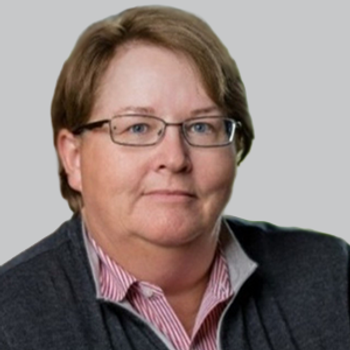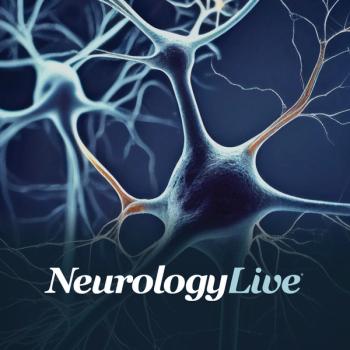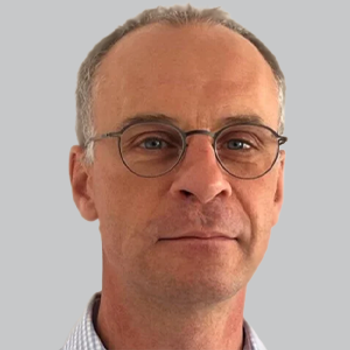
NeurologyLive® Year in Review 2021: Top Q&As
As part of NeurologyLive®'s Year in Review, take a look at some of the most engaging conversations the team has had with experts in neurology this past year.
The backbone of the NeurologyLive® team's efforts are the in-depth interviews done with leaders in the field of neurology discussing the latest research and disease management strategies across the breadth of the specialty. Over the course of 2021, we've spoken with experts in epilepsy, multiple sclerosis, Parkinson disease, dementia, sleep disorders, stroke, and other conditions, all in an effort to assess the latest in clinical care.
In 2021 alone, we have spoken with hundreds of clinicians, researchers, physicians, specialists, and advocacy partners to find out further information about new practice guidelines, therapeutic developments, cutting-edge research, and clinical tools. Take a look back on some of the most-read Q&As from our team in 2021 by clicking the buttons below:
Jennifer Majerisk, MD, MS
Addressing the Neurologist Shortage and Increased Need for Neurologic Care
Jennifer Majersik, MD, MS, lead author of the American Academy of Neurology (AAN) 2019 Transforming Leaders Program report, sat down with NeurologyLive® to discuss the driving forces behind the shortage of neurologists, as well as ongoing strategies being implemented to attract more medical students to fellowships and the field of neurology in general. Majersik, who is chief of the division of vascular neurology and professor of neurology at the University of Utah, discussed suggested strategies developed alongside 9 colleagues, utilizing data and expert opinion to develop a framework for bolstering the workforce and promoting the value of neurology.
Deena Kuruvilla, MD
Migraine Care Gaps: The Physician Shortage and Therapeutic Needs
For the migraine specialists, the mismatch between the number of patients who require neurologic services and the neurologists available to meet this need is all the starker. It is estimated that 40 million
Bruce Cree, MD, PhD
The Historically Fast Progress Made in NMOSD Care
Despite the medical community’s awareness of the disease since as early as the 1890s, the treatment of
Lynn Marie Trotti, MD, MSc
Highlights of AASM Guideline for Treatment of Central Disorders of Hypersomnolence
Lynn Marie Trotti, MD, MSc, a director of AASM and coauthor of the guidelines, sat down with NeurologyLive® to outline the guideline and discuss upcoming research efforts within the sleep medicine space. Trotti, who is also an associate professor of neurology at Emory University School of Medicine, commented on the recommendations, which were classified as either “strong” or “conditional,” based on the evaluated evidence. Key updates include the inclusion of new FDA-approved medications, namely solriamfetol (Sunosi; Jazz) and pitolisant (Wakix; Harmony), for treatment of narcolepsy, and medication recommendations for pediatric narcolepsy, which were not included in the previous guideline. Although the guideline was developed for clinical use, it is also useful for patients, Trotti said, allowing them to understand and guide their own care.
Marwan Sabbagh, MD; Lon Schneider, MD, MS; Anton Porsteinsson, MD; and Robert Howard, MD, MRCPsych
Aducanumab for Alzheimer Disease: Landmark Moment or False Hope for Patients?
Keen to take the pulse of the clinical community following the approval of aducanumab in June, NeurologyLive® spoke to several physicians who treat these patients and have varying opinions on this news: these include Marwan Sabbagh, MD, director, Cleveland Clinic Lou Ruvo Center for Brain Health, and investigator in the aducanumab trials; Lon Schneider, MD, MS, professor of Psychiatry and the Behavioral Sciences, and Della Martin Chair in Psychiatry and Neuroscience, University of Southern California Keck School of Medicine; Anton P. Porsteinsson, MD, director, Alzheimer's Disease Care, Research and Education Program, University of Rochester School of Medicine and Dentistry, and site investigator in the aducanumab trials; and Robert Howard, MD, MRCPsych, Professor of Old Age Psychiatry, Faculty of Brain Sciences, University College London.
Orrin Devinsky, MD
Unanswered Questions With SUDEP, Heart Rate Variability
A recently published retrospective study examined the time-domain and frequency-domain components of patients admitted for video-electroencephalogram (EEG) monitoring between 2003 and 2014, and subsequently died of SUDEP (sudden unexpected death in epilepsy). Considered
Lawrence Severt, MD, PhD
Atogepant and its Place in the Migraine Treatment Landscape
In July 2020, AbbVie announced positive results from the phase 3 ADVANCE clinical trial (NCT02848326) of atogepant in people with episodic migraine. The investigational preventive agent was associated with statistically significant improvements in monthly migraine days (MMD) compared with placebo. In an interview with NeurologyLive®, Lawrence Severt, MD, PhD, director, AbbVie, suggested that atogepant’s oral route of delivery and its mild safety profile make it an attractive treatment option for both clinicians and patients. He shared his thoughts on the history of CGRP antagonists, their effectiveness, and how atogepant separates itself from others in its class. He also discussed the ongoing effort to study the drug in patients with chronic migraine in hopes of adding another option to a limited treatment landscape.
Fabio Nascimento, MD
Addressing the Gaps in SUDEP Education Among Neurology Trainees
Although a large majority of US residents reported being familiar with the term SUDEP and its definition, familiarity with its risk factors was reported by only 61% of respondents and potential mitigation SUDEP strategies by 63%. Lead author
Jessica Zwerling, MD
Is Telemedicine Here to Stay for Alzheimer and Dementia Care?
For patients with Alzheimer disease (AD) and dementia, telemedicine comes with several benefits and challenges. Although virtual visits allow for these patients to easily see their provider without the difficulties of travel, many are elderly and may find the technology to be slightly out of their normal routine. Additionally, many of these patients have either a family member or healthcare professional acting as their caregiver, adding another person into the complexities of this experience. Jessica Zwerling, MD, director, Center for Excellence for Alzheimer's Disease, and associate director, Center for the Aging Brain, Montefiore Medical Center, is one such physician who has been able to utilize telemedicine for her patients. She shared her insight and knowledge of it for this patient population, detailing the challenges to overcome and state of its use, with NeurologyLive® in this interview.
Amit Bar-Or, MD, FRCPC, FAAN, FANA
Discussing COVID-19 Vaccinations and Disease-Modifying Therapies in Multiple Sclerosis
Amit Bar-Or, MD, FRCPC, FAAN, FANA, Melissa and Paul Anderson President’s Distinguished Professor; director, Center for Neuroinflammation and Neurotherapeutics; and chief, Multiple Sclerosis Division, department of neurology, Perelman School of Medicine, University of Pennsylvania, spoke with NeurologyLive following his presentation, “Vaccinations and DMTs,” at the
Newsletter
Keep your finger on the pulse of neurology—subscribe to NeurologyLive for expert interviews, new data, and breakthrough treatment updates.


































